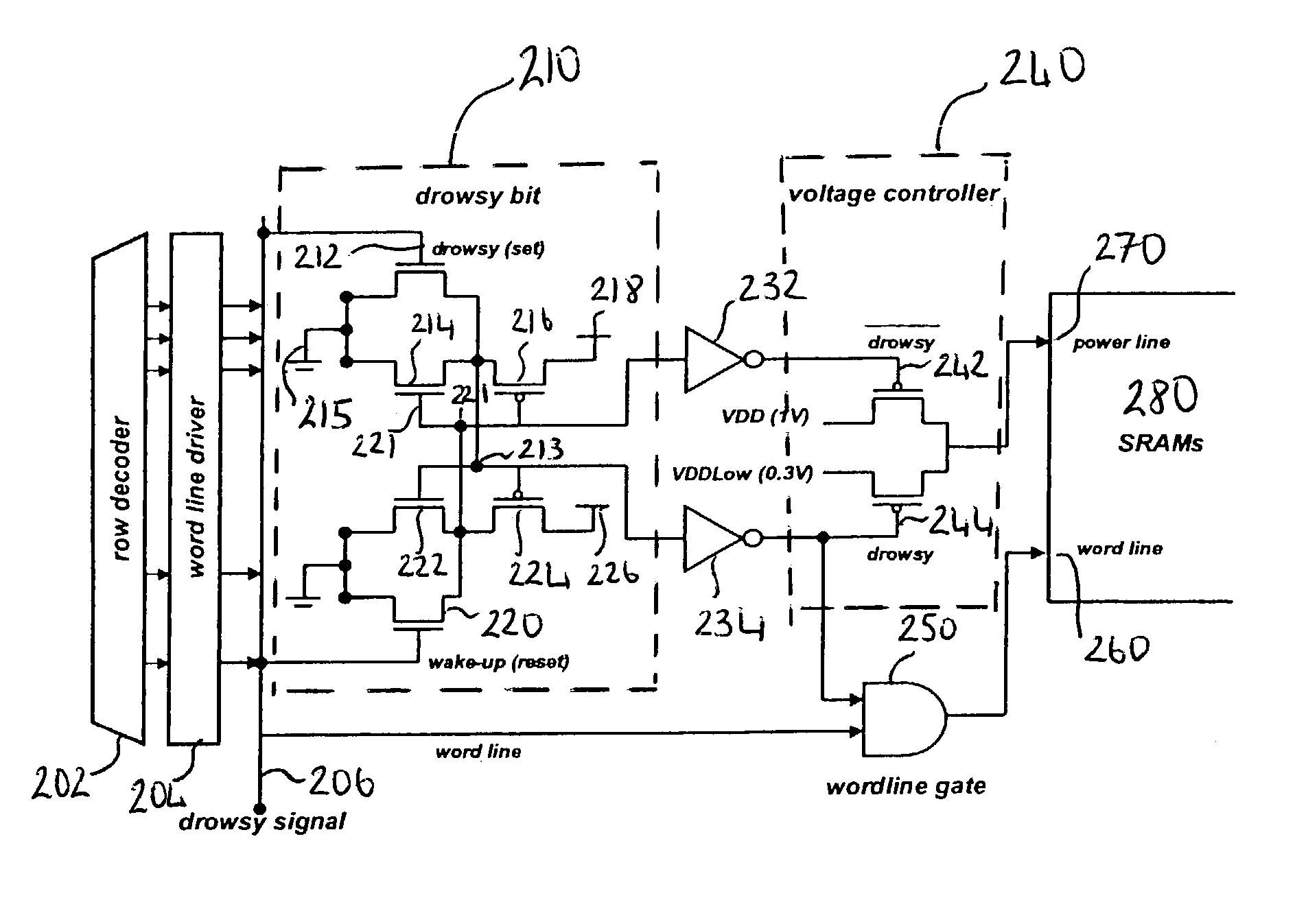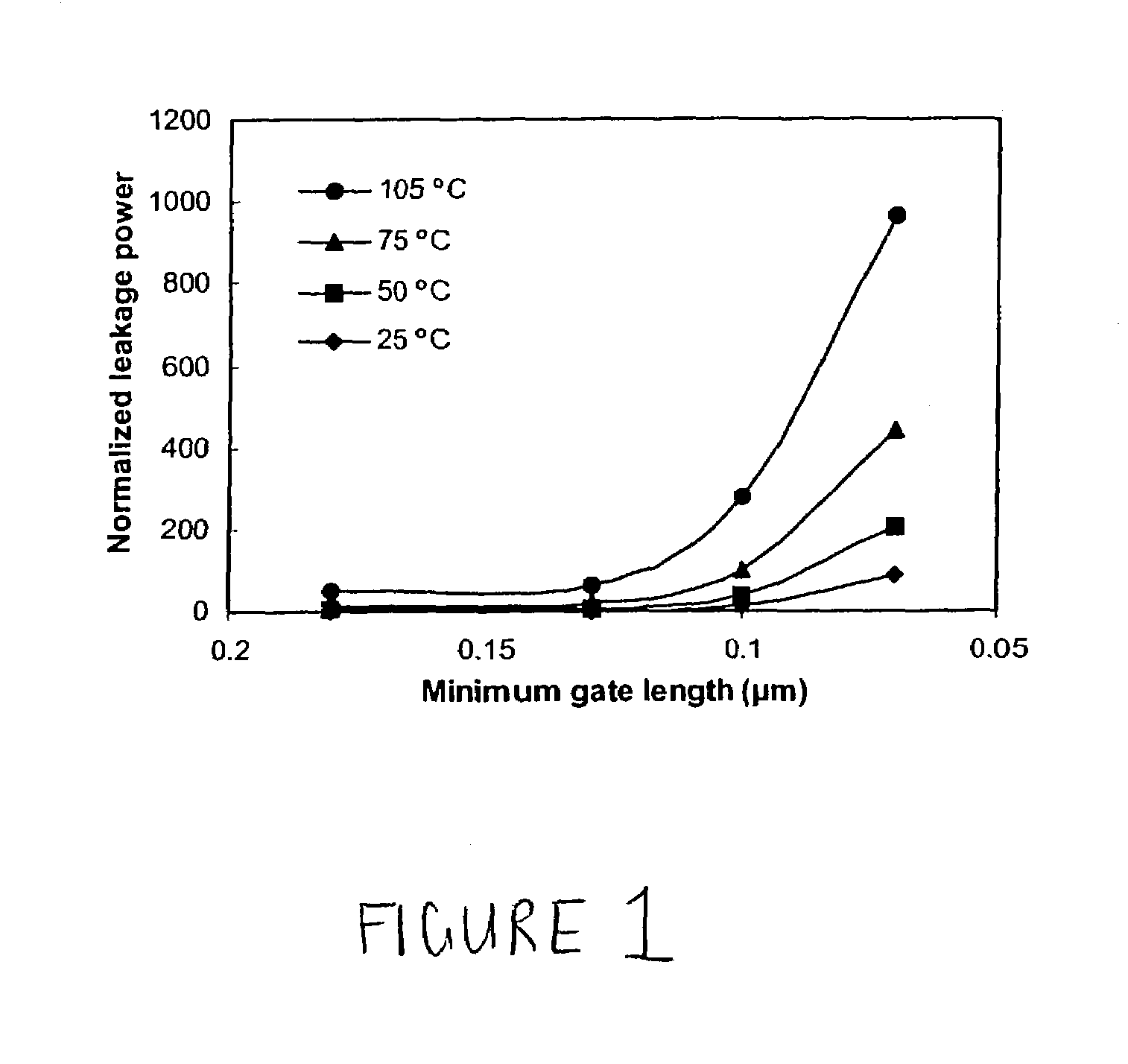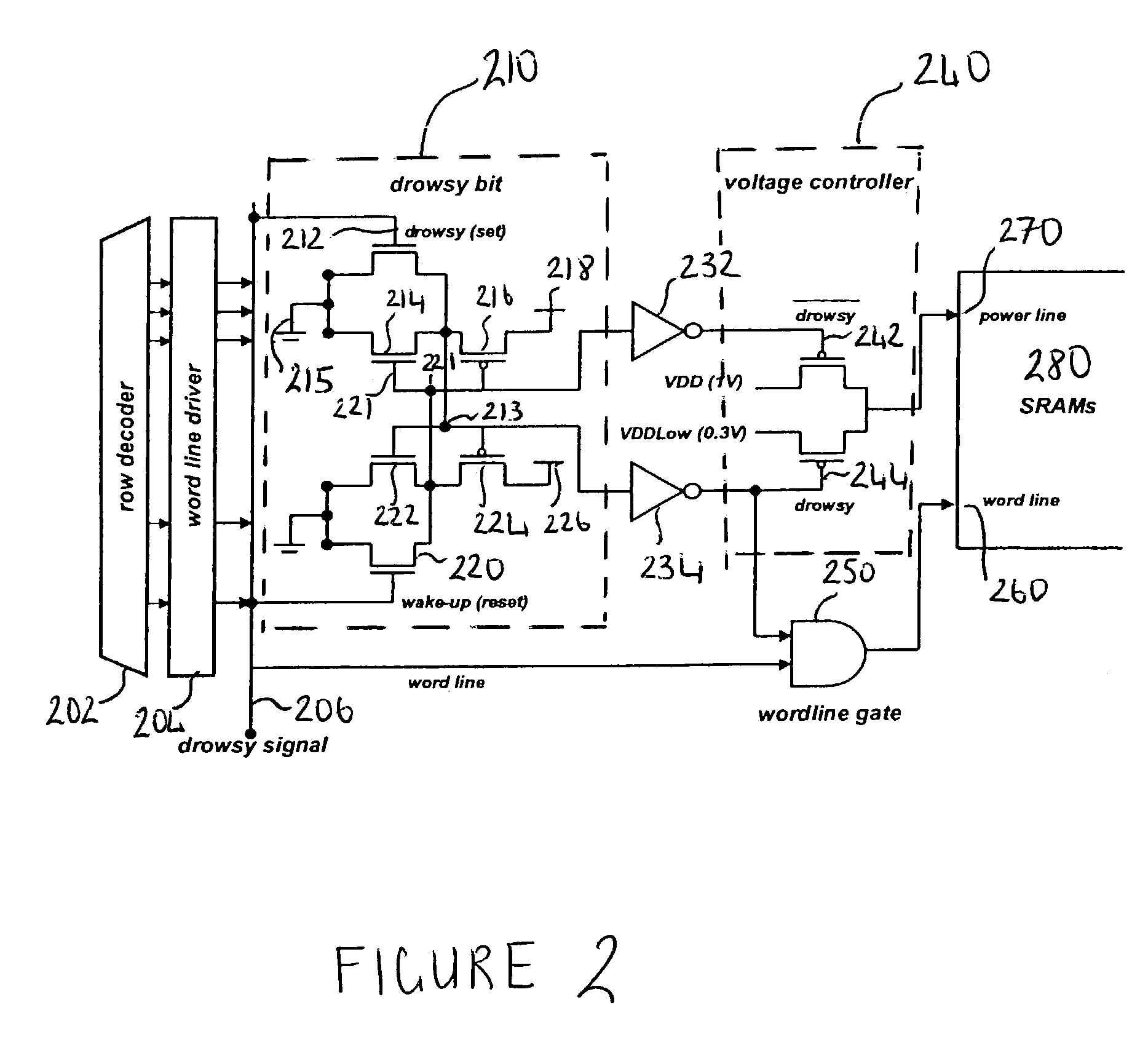Data processor memory circuit
a memory circuit and data processor technology, applied in the field of memory circuits, can solve the problems of increasing static power consumption, reducing the switching time, and losing any information stored in the memory cell when switched into low-leakage mode, so as to reduce the switching time, reduce the leakage through the pass transistor, and increase the threshold voltage
- Summary
- Abstract
- Description
- Claims
- Application Information
AI Technical Summary
Benefits of technology
Problems solved by technology
Method used
Image
Examples
Embodiment Construction
[0072]FIG. 2 schematically illustrates a dynamic voltage scaling (DVS) circuit for a drowsy cache line according to one example embodiment of the invention. The circuit comprises: a row decoder 202; a word line driver 204, a drowsy signal line 206; a drowsy bit control circuit 210 a first NMOS / PMOS series-connected transistor pairs 214, 216 and a second such pair 222, 224, a drowsy (set) NMOS transistor 212 and a wake-up (reset) NMOS transistor 220; a pair of inverter gates 232, 234; a voltage controller comprising two PMOS pass transistors 242 and 244, one of which 242 is connected to a high-voltage line and the other of which 244 is connected to a low-voltage line; a word-line AND gate 250; and an SRAM memory circuit 280 which receives as input a power line270 and a word line 260 from the drowsy bit circuitry.
[0073]The operating voltage of an array of memory cells in SRAM (a cache line) is determined by the voltage controller 240, which switches the array voltage between a high (a...
PUM
 Login to View More
Login to View More Abstract
Description
Claims
Application Information
 Login to View More
Login to View More - R&D
- Intellectual Property
- Life Sciences
- Materials
- Tech Scout
- Unparalleled Data Quality
- Higher Quality Content
- 60% Fewer Hallucinations
Browse by: Latest US Patents, China's latest patents, Technical Efficacy Thesaurus, Application Domain, Technology Topic, Popular Technical Reports.
© 2025 PatSnap. All rights reserved.Legal|Privacy policy|Modern Slavery Act Transparency Statement|Sitemap|About US| Contact US: help@patsnap.com



